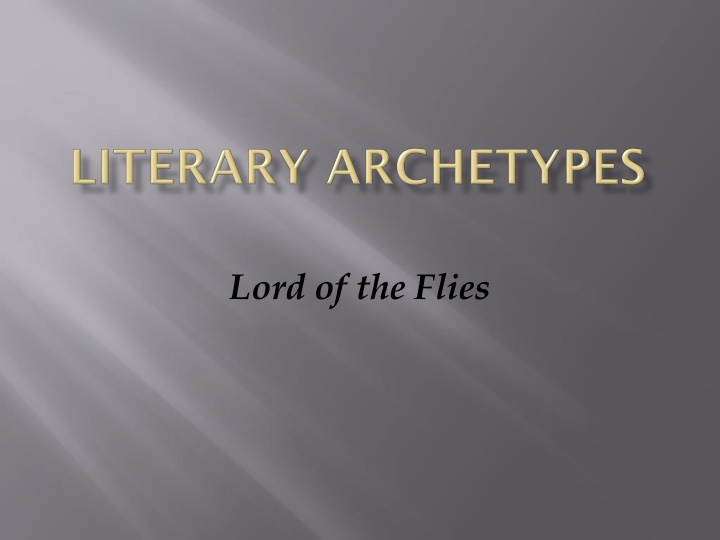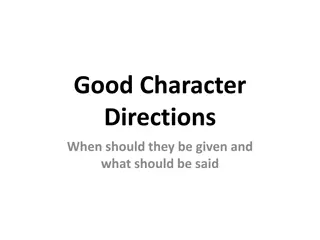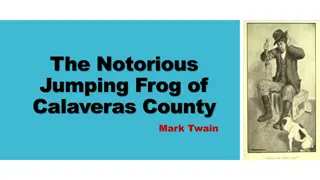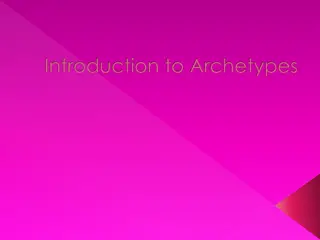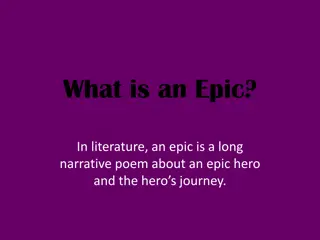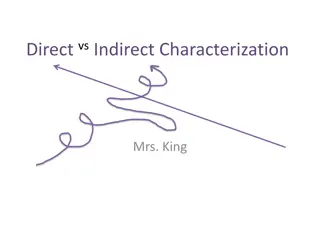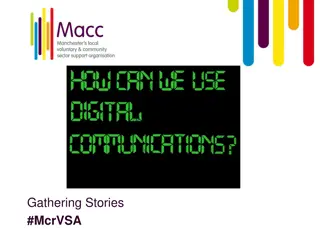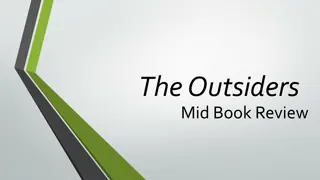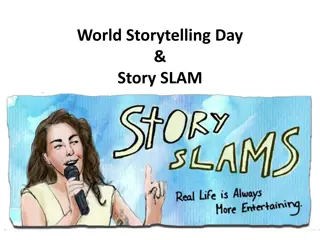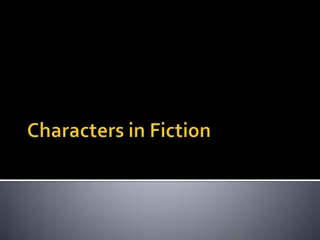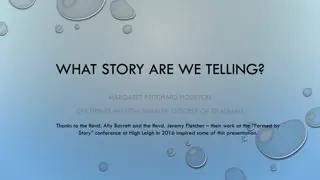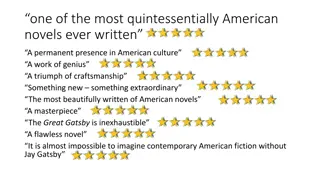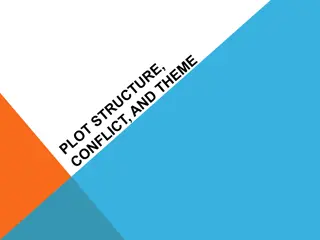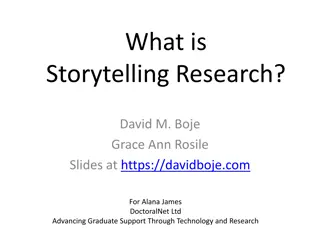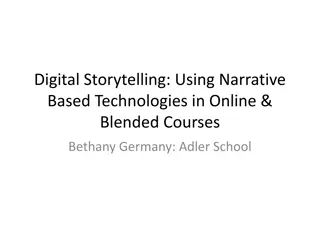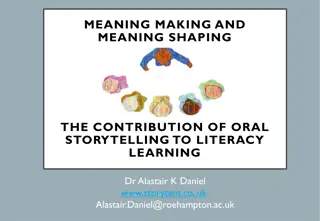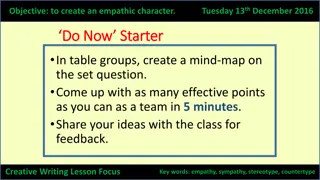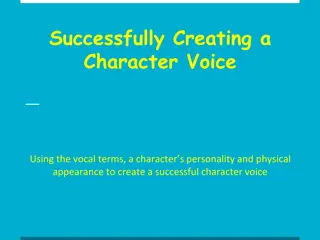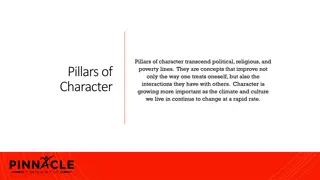Character Archetypes and Their Role in Storytelling
Explore the classic character archetypes such as the hero, villain, everyman, innocent, and Christ figure in storytelling. These archetypes symbolize universal patterns of human nature and play essential roles in narratives by representing moral conflicts, challenges, and sacrifices. Discover how these characters shape the dynamics of storytelling and resonate with audiences on a deep, psychological level.
Uploaded on Sep 10, 2024 | 0 Views
Download Presentation

Please find below an Image/Link to download the presentation.
The content on the website is provided AS IS for your information and personal use only. It may not be sold, licensed, or shared on other websites without obtaining consent from the author.If you encounter any issues during the download, it is possible that the publisher has removed the file from their server.
You are allowed to download the files provided on this website for personal or commercial use, subject to the condition that they are used lawfully. All files are the property of their respective owners.
The content on the website is provided AS IS for your information and personal use only. It may not be sold, licensed, or shared on other websites without obtaining consent from the author.
E N D
Presentation Transcript
A typical character, action, or type of situation that seems to represent universal patterns of human nature Also known as a universal symbol, may be a character, a theme, a symbol, or even a setting
The hero is after some ultimate objective and must encounter and overcome obstacles along the way to achieving this goal. He or she is usually morally good, though that goodness will likely be challenged throughout the story. Heroes ability to stay true to themselves despite the trials they must face is what makes them heroic.
The villain wants to stop the hero archetype from achieving his or her goal. The villain is often evil, though there is often a reason however warped that reason may be why villains are so bad. Villains often want nothing more than to control and have power over everyone and everything around them, probably because most of them are secretly strongly motivated by fear. Villains are often the moral foil of the hero: that is, their main vice will parallel the hero's main virtue.
Often acts as the stand-in for the audience. This character archetype is just a normal person, but for some reason, he or she must face extraordinary circumstances. Unlike the hero, the everyman does not feel a moral obligation to his or her task; instead, these characters often find themselves in the middle of something they have barely any control over. Unlike the hero, the everyman archetype isn't trying to make a great change or work for the common good: these characters are just trying to get through a difficult situation.
These character archetypes are pure in every way. Though often surrounded by dark circumstances, the innocent archetype somehow has not become jaded by the corruption and evil of others. These character archetypes aren't stupid: they're just so morally good that the badness of others cannot seem to mar them.
A Christ figure, also known as a Savior,is a literary technique that the author uses to draw allusions between their characters and the biblical Jesus. More loosely, a prophetic character who parallels Jesus, or other spiritual or prophetic figures. They endure a sizable sacrifice as the means of bringing that salvation about for others, a fate they do not deserve up to and including death Sometimes referred to as the martyr figure
The Blind Seer or prophet is an old archetype. They are blind, and yet they can see more than any of the other characters They are not derailed or distracted by the hero or the villain Blind prophets are able to see injustice and warn of the consequences, even if no one listens Offer guidance and wisdom from the outside looking in, often ignored until it s too late
Which characters from the novel so far fit into these archetypes?
Choose (1) character from the novel so far and write a journal entry from his perspective at the end of chapter 1. Write in first person, as if you ARE this character. What would you be thinking? What are you worried about? What are you excited about? What are your opinions of the other boys at this point? **Due at end of class today**
